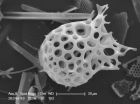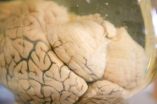(Press-News.org) Physical activity after breast cancer diagnosis has been linked with prolonged survival and improved quality of life, but most participants in a large breast cancer study did not meet national physical activity guidelines after they were diagnosed. Moreover, African-American women were less likely to meet the guidelines than white women. Published early online in CANCER, a peer-reviewed journal of the American Cancer Society, the findings indicate that efforts to promote physical activity in breast cancer patients may need to be significantly enhanced.
The US Department of Health and Human Services, as well as the American Cancer Society, recommends that adults engage in at least 150 minutes of moderate-intensity physical activity or 75 minutes of vigorous-intensity physical activity (or an equivalent combination thereof) each week for general health benefits and for chronic disease prevention and management.
Because it's important to understand whether there is capacity for improvement in the physical activity levels of women with breast cancer, Brionna Hair, a doctoral candidate in epidemiology at the University of North Carolina at Chapel Hill, and her colleagues examined levels of and changes in physical activity following breast cancer diagnosis, overall and by race, in a population-based study of breast cancer patients. The study assessed pre- and post-diagnosis physical activity levels in 1,735 women aged 20 to 74 years who were diagnosed with invasive breast cancer between 2008 and 2011 in 44 counties of North Carolina.
The researchers found that only 35 percent of breast cancer survivors met current physical activity guidelines post-diagnosis. A decrease in activity approximately six months after diagnosis was reported by 59 percent of patients, with the average participant reducing activity by 15 metabolic equivalent hours—equivalent to about five hours per week of brisk walking. When compared with white women, African-American women were about 40 percent less likely to meet national physical activity guidelines post-diagnosis, although their reported weekly post-diagnosis physical activity was not significantly different from that of White women (12 vs 14 metabolic equivalent hours). Ms. Hair noted that it's important to realize that African-American women experience higher mortality from breast cancer than other groups in the United States.
"Medical care providers should discuss the role physical activity plays in improving breast cancer outcomes with their patients, and strategies that may be successful in increasing physical activity among breast cancer patients need to be comprehensively evaluated and implemented," said Ms. Hair.
INFORMATION: END
Most breast cancer patients may not be getting enough exercise
2014-06-09
ELSE PRESS RELEASES FROM THIS DATE:
Longer telomeres linked to risk of brain cancer
2014-06-08
New genomic research led by UC San Francisco (UCSF) scientists reveals that two common gene variants that lead to longer telomeres, the caps on chromosome ends thought by many scientists to confer health by protecting cells from aging, also significantly increase the risk of developing the deadly brain cancers known as gliomas.
The genetic variants, in two telomere-related genes known as TERT and TERC, are respectively carried by 51 percent and 72 percent of the general population. Because it is somewhat unusual for such risk-conferring variants to be carried by a majority ...
New molecule enables quick drug monitoring
2014-06-08
Monitoring the drug concentration in patients is critical for effective treatment, especially in cases of cancer, heart disease, epilepsy and immunosuppression after organ transplants. However, current methods are expensive, time-consuming, and require dedicated personnel and infrastructure away from the patient. Publishing in Nature Chemical Biology, scientists at EPFL introduce novel light-emitting sensor proteins that can quickly and simply show how much drug is in a patient's bloodstream by changing the color of their light. The method is so simple that it could be ...
Retracing early cultivation steps: Lessons from comparing citrus genomes
2014-06-08
Citrus is the world's most widely cultivated fruit crop. In the U.S. alone, the citrus crop was valued at over $3.1 billion in 2013. Originally domesticated in Southeast Asia thousands of years ago before spreading throughout Asia, Europe, and the Americas via trade, citrus is now under attack from citrus greening, an insidious emerging infectious disease that is destroying entire orchards. To help defend citrus against this disease and other threats, researchers worldwide are mobilizing to apply genomic tools and approaches to understand how citrus varieties arose and ...
Warming climates intensify greenhouse gas given out by oceans
2014-06-08
Rising global temperatures could increase the amount of carbon dioxide naturally released by the world's oceans, fuelling further climate change, a study suggests.
Fresh insight into how the oceans can affect CO2 levels in the atmosphere shows that rising temperatures can indirectly increase the amount of the greenhouse gas emitted by the oceans.
Scientists studied a 26,000-year-old sediment core taken from the Gulf of California to find out how the ocean's ability to take up atmospheric CO2 has changed over time.
They tracked the abundance of the key elements silicon ...
Study reveals rats show regret, a cognitive behavior once thought to be uniquely human
2014-06-08
New research from the Department of Neuroscience at the University of Minnesota reveals that rats show regret, a cognitive behavior once thought to be uniquely and fundamentally human.
Research findings were recently published in Nature Neuroscience.
To measure the cognitive behavior of regret, A. David Redish, Ph.D., a professor of neuroscience in the University of Minnesota Department of Neuroscience, and Adam Steiner, a graduate student in the Graduate Program in Neuroscience, who led the study, started from the definitions of regret that economists and psychologists ...
A tiny molecule may help battle depression
2014-06-08
Levels of a small molecule found only in humans and in other primates are lower in the brains of depressed individuals, according to researchers at McGill University and the Douglas Institute. This discovery may hold a key to improving treatment options for those who suffer from depression.
Depression is a common cause of disability, and while viable medications exist to treat it, finding the right medication for individual patients often amounts to trial and error for the physician. In a new study published in the journal Nature Medicine, Dr. Gustavo Turecki, a psychiatrist ...
Targeting tumors using silver nanoparticles
2014-06-08
(Santa Barbara, Calif.) — Scientists at UC Santa Barbara have designed a nanoparticle that has a couple of unique — and important — properties. Spherical in shape and silver in composition, it is encased in a shell coated with a peptide that enables it to target tumor cells. What's more, the shell is etchable so those nanoparticles that don't hit their target can be broken down and eliminated. The research findings appear today in the journal Nature Materials.
The core of the nanoparticle employs a phenomenon called plasmonics. In plasmonics, nanostructured metals such ...
Quick getaway: How flies escape looming predators
2014-06-08
When a fruit fly detects an approaching predator, it takes just a fraction of a second to launch itself into the air and soar gracefully to safety—but there's not always time for that. Some threats demand a quicker getaway, even if things get a little clumsy. New research from scientists at the Howard Hughes Medical Institute's Janelia Research Campus reveals how a quick-escape circuit in the fly's brain overrides the fly's slower, more controlled behavior when a threat becomes urgent.
"The fly's rapid takeoff is, on average, eight milliseconds faster than its more controlled ...
More than just a hill of beans: Phaseolus genome lends insights into nitrogen fixation
2014-06-08
"It doesn't take much to see that the problems of three little people doesn't add up to a hill of beans in this crazy world," Humphrey Bogart famously said in the movie Casablanca. For the farmers and breeders around the world growing the common bean, however, ensuring that there is an abundant supply of this legume is crucial, both for its importance in cropping systems to ensure plant vitality and for food security. Moreover, the U.S. Department of Energy Office of Science has targeted research into the common bean because of its importance in enhancing nitrogen use ...
Argument with dad? Find friendly ears to talk it out, study shows
2014-06-06
With Father's Day approaching, SF State's Jeff Cookston has some advice for creating better harmony with dad. In a recent study, he found that when an adolescent is having an argument with their father and seeks out others for help, the response he or she receives is linked to better well-being and father-child relationships.
Adolescents who receive an reason for the father's behavior or a better understanding of who is at fault feel better about themselves and about dad as well. Those feelings about dad, in turn, are linked to a lower risk of depression for youth.
The ...



